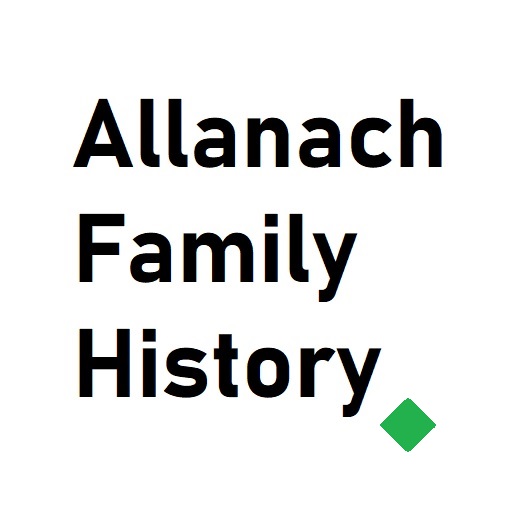Almost all Allanachs today speak English (albeit in various dialects – Yorkshire, American, Canadian, Australian and Kiwi!), a few living in Scotland speak Doric, Scots and Gaelic. But what language would the original Allanach families of the 1600s and 1700s have spoken?
There is unfortunately no conclusive evidence as to which language the Allanachs spoke but there is plenty of evidence which suggests a picture of gradual language shift from Gaelic and Doric to Scots and English.
Gaelic
The Gaelic language would have been spoken as the first language in this area of Scotland up until the 1750s. After that, the language went into decline and was banned from public places following Culloden. The language lived on though, despite the attempts of the British authorities to eradicate it, and it became a language of political resistance ( such as Sandie Davidson) or a secret language of the whisky smugglers.
Gaelic was still written and spoken in private in this period, though perhaps not published. It would be many years before Ian Allanach was also referenced in a poem ‘Blàr na h-Òlaind (Battle of Holland)’ by Alasdair MacFhionguin (1774-1814) – an extract from the book Bardachd Ghàidhlig is shown below.

But Gaelic would face an ongoing threat from attempts to anglicise the Highlands. The Rev John Gordon reported for Strathdon parish in the (old) Statistical Account of Scotland in 1799 that ‘The language spoken is English, or rather broad Scotch, excepting in Corgarff. The people there, especially in the upper part of that district, speak also a kind of Gaelic: but that language among them is much in decline’. In neighbouring Glen Muick it was reported that, ‘Their language is English, except in the upper parts of the parishes of Tulloch and Glengairn, where some of them use a barbarous dialect of the Gaelic among themselves, but they all understand the English.’
There are tales from the smuggling heydays of the 1820s when notorious Gauger Malcolm Gillespie stalked the Glen. A Glen Nochty neighbour a few hundred yards up the track from Aldachie was Gaelic speaker ‘Baubie Bàn’ (white haired Barbara). You can read the story here Malcolm Gillespie in Glen Nochty Baubie Ban
Another neighbour who spoke Gaelic would have been Eppie Thane, of Duff Defiance fame. First-hand accounts confirm her as a Gaelic speaker.
Alexander ‘Sandy’ Davidson of Glenbucket was another noted Gaelic speaker, ‘In ordinary conversation he spoke the Gaelic, but when the language was unsuitable to the occasion he spoke English, and clothed his conversation in robust, vigorous Saxon’ .
Another story tells of the Glen Nochty boys smuggling gang speaking to soldiers in Gaelic in the 1820s.
Finally, the Allanachs left clues they were Gaelic speakers in their names. ‘Alias’ names, often the equivalent of nicknames in the Highland world where many people had similar names and a characteristic of themselves became a component of their name, were used by the Allanachs in the Old Parish records. I have seen many examples of ‘bui’ (‘buidhe’ or golden haired Gaelic), as per the below marriage record from 1703, and another as Og (or Òg which is young in Gaelic)
With so many near neighbours in Glen Nochty speaking Gaelic, it is likely the original Allanachs also did. Afterall, ‘Allanach’ is a Gaelic name and the landscape surrounding Glen Nochty is filled with Gaelic placenames.
Doric
There is an interesting insight into Ian Allanach‘s language use in Deeside Tales in which he is said to have a poor command of English.
”His command of English was too poor to serve his purpose, and he had a ludicrous way of giving English accents to Scotch words when compelled to use them. He generally, however, relapsed entirely into his native Doric if he happened to be driven off his usual line of march by a question, or request for an explanation.”
Scots
As use of Doric faded, and Allanachs moved to different areas of Scotland, the use of Scots was likely to have increased in the extended family.
English
English would have started its rise to dominance from the 1700s onwards.
